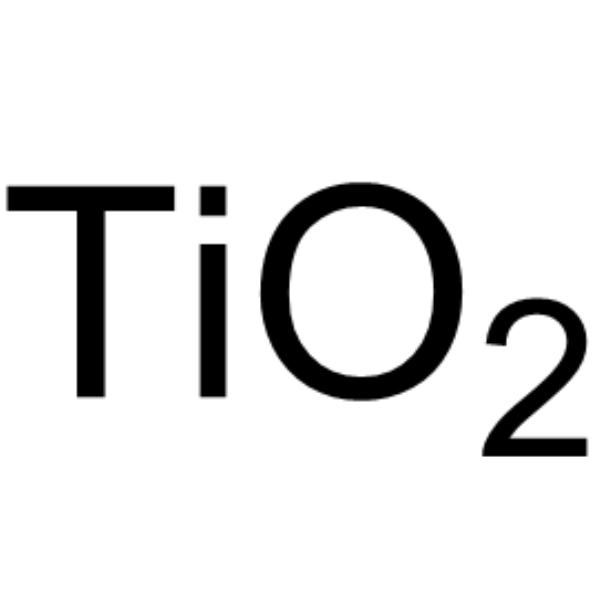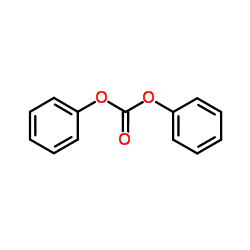titanium dioxide

titanium dioxide structure
|
Common Name | titanium dioxide | ||
|---|---|---|---|---|
| CAS Number | 13463-67-7 | Molecular Weight | 79.87 | |
| Density | 4.26 g/mL at 25 °C(lit.) | Boiling Point | 2900 °C | |
| Molecular Formula | O2Ti | Melting Point | 1840 °C | |
| MSDS | Chinese USA | Flash Point | 2500-3000°C | |
| Symbol |



GHS05, GHS07, GHS08 |
Signal Word | Danger | |
Use of titanium dioxideTitanium(IV) oxide is a photosensitizer. Titanium(IV) oxide can be used as an excipient, such as glidant, coating agent, opacifier, coloring agent. Pharmaceutical excipients, or pharmaceutical auxiliaries, refer to other chemical substances used in the pharmaceutical process other than pharmaceutical ingredients. Pharmaceutical excipients generally refer to inactive ingredients in pharmaceutical preparations, which can improve the stability, solubility and processability of pharmaceutical preparations. Pharmaceutical excipients also affect the absorption, distribution, metabolism, and elimination (ADME) processes of co-administered drugs[1][2]. |
| Name | titanium dioxide |
|---|---|
| Synonym | More Synonyms |
| Description | Titanium(IV) oxide is a photosensitizer. Titanium(IV) oxide can be used as an excipient, such as glidant, coating agent, opacifier, coloring agent. Pharmaceutical excipients, or pharmaceutical auxiliaries, refer to other chemical substances used in the pharmaceutical process other than pharmaceutical ingredients. Pharmaceutical excipients generally refer to inactive ingredients in pharmaceutical preparations, which can improve the stability, solubility and processability of pharmaceutical preparations. Pharmaceutical excipients also affect the absorption, distribution, metabolism, and elimination (ADME) processes of co-administered drugs[1][2]. |
|---|---|
| Related Catalog | |
| References |
| Density | 4.26 g/mL at 25 °C(lit.) |
|---|---|
| Boiling Point | 2900 °C |
| Melting Point | 1840 °C |
| Molecular Formula | O2Ti |
| Molecular Weight | 79.87 |
| Flash Point | 2500-3000°C |
| Exact Mass | 79.937775 |
| PSA | 34.14000 |
| Appearance of Characters | powder |
| Index of Refraction | 2.61 |
| InChIKey | GWEVSGVZZGPLCZ-UHFFFAOYSA-N |
| SMILES | O=[Ti]=O |
| Storage condition | -20°C |
| Water Solubility | insoluble |
| Symbol |



GHS05, GHS07, GHS08 |
|---|---|
| Signal Word | Danger |
| Hazard Statements | H302-H318-H373 |
| Precautionary Statements | P260-P280-P301 + P312 + P330-P305 + P351 + P338 + P310 |
| Personal Protective Equipment | Eyeshields;Gloves;type N95 (US);type P1 (EN143) respirator filter |
| Hazard Codes | Xn |
| Risk Phrases | R10;R20;R22;R38;R20/21;R20/21/22;R36/37/38;R36/38 |
| Safety Phrases | S2;S25;S26;S36;S36/S37 |
| RIDADR | UN 1307 3/PG 3 |
| WGK Germany | - |
| RTECS | XR2275000 |
| HS Code | 2823000000 |
| Precursor 0 | |
|---|---|
| DownStream 2 | |
| HS Code | 2823000000 |
|---|
|
Study of the persistence of the anti-inflammatory effect observed after application of preparations containing organic ultraviolet filters.
Int. J. Pharm. 476(1-2) , 160-3, (2015) Given that previous studies have highlighted the anti-inflammatory nature, which is influenced by UV radiation, of a certain number of ultraviolet filters currently used in Europe, it seemed interesti... |
|
|
Comparison of a novel TiO₂/diatomite composite and pure TiO₂ for the purification of phosvitin phosphopeptides.
J. Chromatogr. B. Analyt. Technol. Biomed. Life Sci. 960 , 52-8, (2014) A novel TiO2/diatomite composite (TD) was prepared and then characterized by scanning electron microscope (SEM) and Fourier Transform Infrared (FTIR). The results of SEM showed that after modification... |
|
|
Iron Oxide and Titanium Dioxide Nanoparticle Effects on Plant Performance and Root Associated Microbes.
Int. J. Mol. Sci. 16 , 23630-50, (2015) In this study, we investigated the effect of positively and negatively charged Fe₃O₄ and TiO₂ nanoparticles (NPs) on the growth of soybean plants (Glycine max.) and their root associated soil microbes... |
| Titanium(IV) oxide,anatase powder |
| Titania,Titanium dioxide |
| Titania nanofibers,Titania nanowires,Titania |
| Titanium(IV) oxide,predominantly rutile |
| Titanium(IV) oxide |
| Titanium(IV) oxide,Aeroxide P25 |
| Titanium dioxide,anatase |
| Titanium(IV) oxide,predominantly rutile,(trace metal basis) |
| Titanium oxide |
| MFCD00011269 |
| Titanium dioxide |
| EINECS 236-675-5 |
 CAS#:80-62-6
CAS#:80-62-6 CAS#:102-09-0
CAS#:102-09-0
